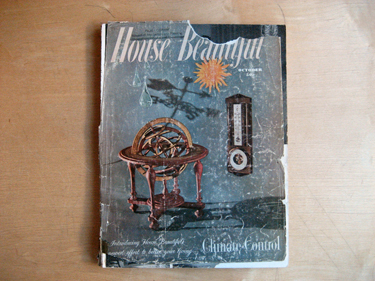A Machine for Climate:
The House Beautiful/AIA Climate Control Project
1949-1952
7.0 | Conclusion
Lessons Learned
One contribution the House Beautiful/AIA collaboration made was to establish a precedent of forging relationships between researchers and funding sources and institutions. For example, Olgyay's data presented in his 1963 book is the result of a eight years of research supported by the federal Housing and Home Finance Agency, the Simon Guggenheim Foundation, and Princeton University's Research Fund.25
I can identify two lessons which can be learned from the House Beautiful project and 1950s interest in environmentally-sensitive design. The first is that through collaboration, it is possible for design ideas to take on an additional life outside of research and in reality. Collaboration can also provide exposure of ideas to a much broader audience, even if it requires a simplification of the concepts which drive them. This kind of collaboration can also allow ideas to take on new meaning and connotation, such as the 'American aesthetic' portrayal which House Beautiful applied to the AIA's proposals.
Secondly, this collaborative publication sets a high standard for collaborations between professional organizations and public media which could, and should be happening today to encourage a mutual education and awareness of important factors which impact everyone, not solely the design world. This kind of collaboration encourages an educated public capable and willing to hold design professionals responsible for the impact we leave on our built environment.

October 1949 House Beautiful cover. Photograph by author.